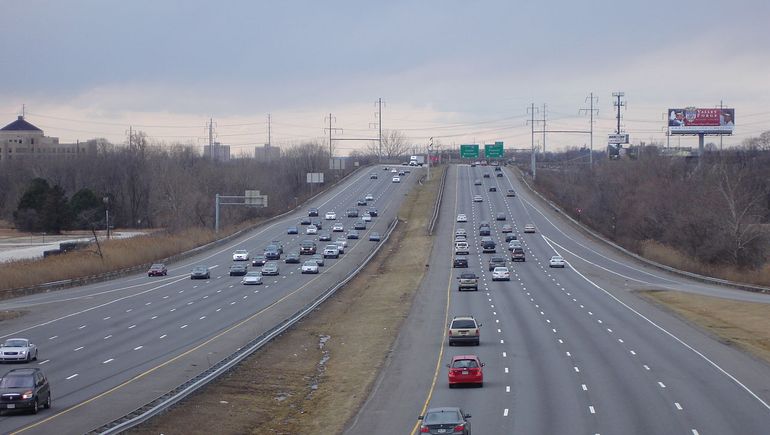The debate over EV charging at interstate rest stops

An Eisenhower-era regulation forbidding commercial activity at interstate rest stops has found itself in a new age, one where truckers want an end to rest stop shutdowns and environmentalists want easily accessible electric charging along the highways as the green movement accelerates.
The federal government has regulated interstate highway rest stops since 1956, and they cannot have fueling stations or restaurants, with some exceptions. But Congress introduced legislation in the form of H.R. 2 — The Moving Forward Act — that would permit electric vehicle charging at rest areas. It passed the House in 2020, and it could later be tucked into President Joe Biden’s $2 trillion plan for infrastructure and climate.
The issue is a thorny one. NATSO, formerly known as National Association of Truck Stop Operators, opposed Congress carving out an exception to the commercial-activity ban and allowing EV charging infrastructure.
Doing so “would not only discourage existing refueling stations throughout the country from investing in charging infrastructure, but it will signal to prospective EV drivers that they will not be able to access the same amenities and fueling experience to which they are accustomed,” NATSO Vice President of Government Affairs David Fialkov said in a statement. “This is the wrong signal for Congress to send.”
NATSO wants to make sure electric charging isn’t seen as a foot in the door for commercialization, or for state governments to begin competing with the private sector for charging fees. And while the coalition understands the trend toward EVs, it blasted the idea of placing chargers at interstate rest stops.
“If the objective is to install more EV charging stations, it is overly simplistic to think placing them at interstate rest areas is a good idea,” said Fialkov. “It’s like calls to ban gas-powered vehicles. It strikes me as a cop-out. The real challenge is to create a tax-and-incentive structure that makes the private sector want to invest in EV chargers and consumers to want to buy EVs.”
Are Eisenhower-era rules still relevant?
The interstate rest-stop regulations were written in the Federal Aid Highway Act of 1956, which created the interstate highway system. The law limited what rest stops could offer. Most of the nation’s interstate rest stops have washrooms, parking and vending machines that are contracted out to disabled business owners. The regulation was intended to keep business in the towns and cities that the interstates came near.
Some note the rest-stop model was created in the Eisenhower era, and doesn’t take into account the needs of truckers who need parking or an electric charge.
Norita Taylor, spokesperson for the Owner-Operator Independent Drivers Association, said the organization has long advocated for the commercialization of rest areas, and even more so today as states close some of the interstate rest stops for reasons related to budgets or the coronavirus.
“Now more than ever, our members are relying on rest areas to safely rest when tried or required to by law,” Taylor said. “If commercialization will help states keep these locations open during difficult budgetary times, we’re all for it.”
One policy expert said the travel-stop rule is dated.
“[The regulation] has outlived its usefulness,” said Robert Poole, director of transportation policy at the Reason Foundation. “The needs are not being met.”
Poole said NATSO and its coalition allies see rest stops as a potential major threat to their businesses, and too great a threat.
“They have kind of a zero-sum mentality that anything added will put some people out of business,” said Poole.
Long treks to parking
Poole said the debate misses a concern outside of EVs, and that is parking. Allowing greater spaces on the interstate would help alleviate the truck-parking shortage, he said.
Parking is not likely to improve anytime soon. In the Federal Highway Administration’s 2019 Jason’s Law truck parking survey, 79% of 524 truck stop owners and operators indicated they do not plan to add more truck parking, according to slides shown during a National Truck Parking Coalition meeting in December.
The problem compounds as land near interstate exchanges becomes more expensive. The private sector then puts its parking, its hotels and its fuel stations farther from the interstate, said Andrew Warcaba, president of Warcaba & Associates. That leads to longer treks for drivers seeking fuel, hotels and parking, he said. And sometimes that leads to congestion.
“At some of these locations, you get off and you could spend 30 minutes in traffic,” said Warcaba.
Fialkov said adding commercialization to rest stops would limit parking more, because taking traffic away from truck stops “undercuts their sources of revenue and limits the return on investment from expanding parking capacity.”
Warcaba said if the states open up their rest stops to fuel and parking providers, many of NATSO’s members will likely bid on the sites. But for now, NATSO members will oppose loosening the regulations, he said.
Warcaba said states that are closing rest stops should see a change in the law as an opportunity for development, especially for parking. But he doesn’t see a likelihood the federal government will change the rule, even as some truckers struggle to find parking.
“No one truly understands the life of a trucker,” said Warcaba.





